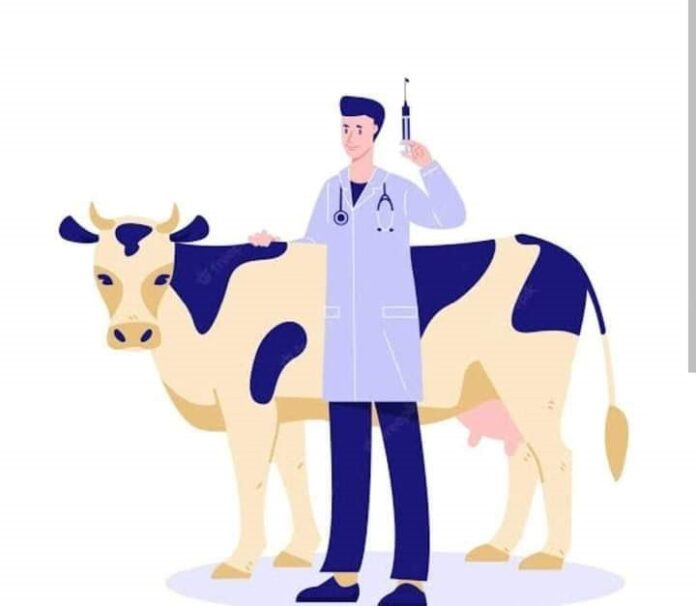Exploration of alternative feed resources for economical livestock feeding
India has 17.5% of the world’s population and 20% of the world’s livestock population on just 2.3% of the planet’s land area. The human population is growing at a rate of 1.6% annually, while the population of animals is growing at a rate of 0.66% annually. The expanding human and animal populations are vying ferociously for land resources to produce food and fodder, respectively. As a result, only 4% of the nation’s total cultivable area is used for growing farmed fodder. The nation currently confronts a net deficiency of 35.6% green fodder, 10.5% dry crop leftovers, and 44% concentrate feed ingredients. The traditional feed includes crop residues or straws of jowar, bajra, ragi, wheat, barley, etc. either in the form of whole straw or powder form, either taken as a sole feed or supplemented with green fodder. There are very few options for expanding the amount of land used for fodder agriculture1. As a result, there is an imbalance between the supply and demand for feed, which has an indirect impact on livestock productivity. The non-traditional feed resources or alternate feed sources are crucial in helping to close this supply-demand mismatch2. The term “non-conventional feed resources” (NCFR) refers to all feeds that are either not typically utilised in commercially manufactured livestock rations or have not historically been used in animal feeding. NCFR typically includes a range of feeds derived from perennial crops as well as feeds with both animal and industrial origins.
Alternative Feed for Livestock
Alternative feed is any kind of feed that is not a standard treatment for animals. Animals might receive alternate feed for reasons related to their health, environment, or sustainability. Alternative feed is beneficial for farm animals including chickens, cows, pigs, and others because it benefits both the environment and the animals4.In 2021, the Indian market for animal feed had a value of US$10.95 billion. The market is expected to grow at a CAGR of 9.6% from 2022 to 2027, reaching US$ 18.74 billion5.There has been an increase of 50% in the prices of maize and soya over the last 3 years. Thus, increasing the production cost by 40-50% 6. It is the need of the hour to come up with ways to feed animals that are more sustainable as our population continues to increase. Given the concerns about sustainability and the future of both our human and animal populations, it should not be surprising that we are starting to look at alternative feed sources for animals7. Furthermore, the industry players are being encouraged to convert to more sustainable and affordable ingredients for livestock production due to the price volatility, and supply instability of these raw materials8. The potential alternatives to conventional animal feed are insect feed, algae-based feed, and Genetically Modified feed.
Insect Feed
The demand for the production and consumption of edible insects is increasing relating to their high nutritional content and minimal danger of transmitting zoonotic diseases. In comparison to conventional meats like poultry and animals, insects have higher protein and lower fat content. They can be produced on organic waste and produce less ammonia and greenhouse gases than conventional animals. This is fueling market expansion. Insects are effective at turning food sources into protein. For example, to generate the same amount of protein, crickets require 12 times less feed than cattle, 4 times less feed than sheep, and 50% less feed than pigs and broiler chickens9. In India, there are no standard rules or specifications by BIS/ FSSAI on usage of unconventional feed materials in food formulation. The insect farming has not been promoted for the feed production as there are no legislation framed for many of the most growing insects like Black Soldier Fly in the feed inclusions though other insects like silkworms have already been accepted as inclusions in the animal feeds. The global insect feed market was valued at $ 667.9 million in 2017 and is anticipated to increase by 12% CAGR to reach $ 1,996.4 million by 2032.
Microalgae based Feed
Another source of protein-rich alternative feed is algae. Compared to meat and eggs, it is a significantly more environmentally friendly source of protein for both people and animals11. Although there are many species of algae that might be utilised as feed, several varieties are now widely accessible in the market. Blue-green and green algae are increasingly being added to feed products, and they can be utilised for both animal and human feed. These algae contain a remarkable 40% to 60 % protein content together with a large number of amino acids12. Chlorella, Scenedesmus, and Arthrospira are a few examples of the microalgae that can be added in a small quantity (4% or 8%) to traditional feed to improve growth, health, and overall physiology of animals as well as product quality and quantity. They provide a variety of nutritional advantages to animals and will promote their long-term health13. Globally, the demand for microalgae in the animal feed industry was US$ 57.54 Mn in 2021. With a 3.5% CAGR for the years 2021 to 2031, the market is anticipated to reach US$ 80.96 Mn by 2031.
Genetically Modified Feed
Genetically Modified crops are consumed by over 95% of livestock in the United States. Over 80 % Poultry in Europe is fed Genetically Modified crops. The European Commission has authorised maize and soybean as genetically modified crops to be used as animal feed15. Corn, canola, cottonseed, soybeans, and potatoes are the GMO crops most frequently used in animal feed and pet food. These crops are primarily employed as a source of protein or energy in the feed regimens for livestock. The nutritional content, safety, and quality of eggs, dairy products, and meat from animals that consume GMO food are comparable to those of animals that consume solely non-GMO food. The DNA of the GMO food does not enter the DNA of the animal when consumed as feed16. However, in India, policy makers have been wary of GMO, and and the current regulatory framework only permits Bacillus thuringiensis (Bt) cotton as a GM crop . In May 2022, due to consistent request by Indian Poultry Industry, the India imported 550,000 metric tonnes of genetically modified Soy Meal to meet the demand for feed in the country.
Additionally, State Animal Husbandry Departments, the National Dairy Development Board, Veterinary Schools, and Indian Council of Agricultural Research institutions offer regular advice and training to farmers and entrepreneurs to help them produce packaged animal feed items like pallets, complete feed, region-specific mineral mixtures, etc. Further, there is focus on raising overall productivity through a distinct set of livestock policies. Under National Livestock Mission there is a sub mission on feed and fodder development to strengthen fodder seed chain to improve availability of certified fodder seed required for fodder production and encouraging entrepreneurs for establishment of fodder Block/Hay Bailing/Silage Making Units through incentivisation. For setting up a feed/fodder value addition unit for the preparation of hay, silage, a total mixed ration (TMR), fodder blocks, or fodder storage facilities, the Central Government offers beneficiaries of the National Livestock Mission Scheme a 50% capital subsidy18. Thus, in a situation where the demand outstrips supply, it is evident that there are massive investment and innovation opportunities for entrepreneurs and corporations in India’s feed sector.
Exploration of alternative feed resources for economical livestock feeding
EXPLORATION OF ALTERNATIVE FEED RESOURCES FOR ECONOMICAL LIVESTOCK FEEDING




